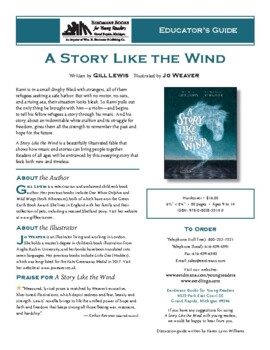A Story Like the Wind (Gill Lewis/Jo Weaver) Novella Discussion Guide
- PDF
Description
Guide a classroom, library, book club, or other discussion of this masterful novella about refugees and the power of hope. Arranged by Common Core standards and written by acclaimed author Karen Lynn Williams, this free downloadable pdf will jumpstart conversations and invite reflection on the book's themes.
About A Story Like the Wind: Rami is in a small dinghy filled with strangers, all of them refugees seeking a safe harbor. But with no motor, no oars, and a rising tide, their situation looks bleak. So Rami pulls out the only thing he brought with him—a violin—and begins to tell his fellow refugees a story through his music. And his story, about an indomitable white stallion and its struggle for freedom, gives them all the strength to remember the past and hope for the future.
A Story Like the Wind is a beautifully illustrated fable that shows how music and stories can bring people together. Readers of all ages will be entranced by this sweeping story that feels both new and timeless.
This book has received multiple awards, starred reviews, and honors, including:
- New York Journal of Books 2018 Notable Children's Books List
- USBBY 2018 Outstanding International Books List
- CBC 2018 Notable Social Studies Books for Young People List
Order free bookmarks for this book through Eerdlings, the official blog of Eerdmans Books for Young Readers.





